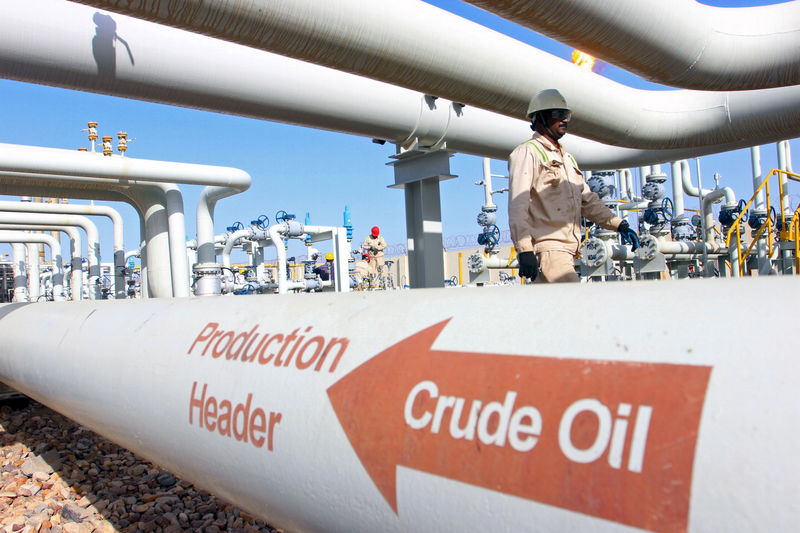Investing.com - Oil prices fell to the lowest levels of the session in North American trade on Tuesday, after a Libyan OPEC delegate said it does not plan to attend next month’s production freeze meeting in Doha.
The delegate added that Libya wants to increase output when the situation allows. Libya pumped 1.6 million barrels per day (bpd) of crude before the 2011 civil war. Output has been slowed by continued unrest and is currently below 400,000 bpd.
Meanwhile, sentiment also took a hit after explosions tore through the departure hall of Brussels airport on Tuesday morning killing at least 26 people and injuring 35 others and a second blast struck a metro station in the capital shortly afterwards.
On the ICE Futures Exchange in London, Brent oil for May delivery slumped 27 cents, or 0.65%, to trade at $41.27 a barrel by 12:37GMT, or 8:37AM ET, after hitting an intraday low of $41.12.
On Monday, London-traded Brent futures tacked on 34 cents, or 0.83%, as continued hopes major oil producers will discuss a potential output freeze lifted prices.
Producers from the Organization of the Petroleum Exporting Countries and non-members are due to meet on April 17 in Qatar discuss the output freeze. But it isn’t clear exactly which, or how many, OPEC and non-OPEC members will attend the meeting.
Brent futures are up by roughly 40%, since briefly dropping below $30 a barrel on February 11. Short-covering began in mid-February after Saudi Arabia and fellow OPEC members Qatar and Venezuela agreed with non-OPEC member Russia to freeze output at January levels, provided other oil exporters joined in.
Elsewhere, crude oil for May delivery on the New York Mercantile Exchange shed 36 cents, or 0.87%, to trade at $41.16 a barrel. A day earlier, Nymex prices rose 38 cents, or 0.92%.
Market players looked ahead to fresh weekly information on U.S. stockpiles of crude and refined products. The American Petroleum Institute will release its inventories report later in the day, while Wednesday’s government report could show crude stockpiles rose by 3.0 million barrels in the week ended March 18.
Since falling to 13-year lows at $26.05 on February 11, U.S. crude futures have rebounded by approximately 40% as a decline in U.S. shale production boosted sentiment.
However, analysts warned that market conditions remained weak due to an ongoing glut. U.S. crude stockpiles currently stand at all-time highs above 520 million barrels.
